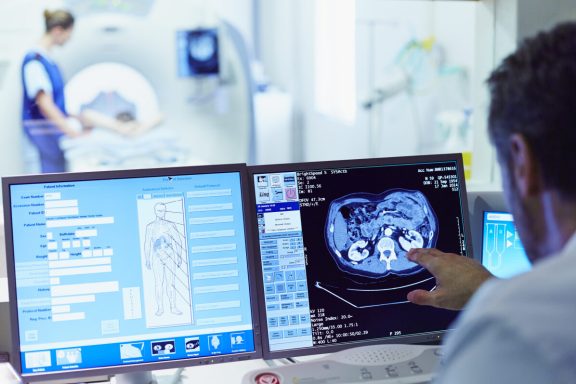
Aim:
To develop, validate and implement decision support systems based on imaging for the diagnosis, prognosis and triaging of oncology patients.
Every day, oncologists navigate critical decisions balancing cure and potential side effects that can significantly impact a patient’s quality of life. MRI, PET, and CT play a pivotal role in diagnosis and treatment, but this wealth of information is often underutilized, impacting our ability to refine the delicate balance between cure and quality of life.
Our interdisciplinary team comprises physicists, data scientists, radiologists, epidemiologists, hematologists, surgeons, and medical oncologists. Together, we are on a mission to unlock the untapped potential of medical images, identifying novel imaging biomarkers that empower oncologists and patients to navigate challenging treatment decisions.
Should an oncologist proceed with surgery, risking severe comorbidity, or opt for careful surveillance? When is it prudent to initiate preemptive medical interventions to mitigate future harm, and when should watch-and-wait be favored? For which patients do costly medications with significant side effects offer little hope of cure?
We delve into these complex questions, leveraging the latest advancements in physics, mathematics, and artificial intelligence to develop and validate decision support systems that guide clinical practice.
Deep learning, radiomics, explainable artificial intelligence (xAI), segmentation, classification, AI regression, prognostic and predictive modelling.